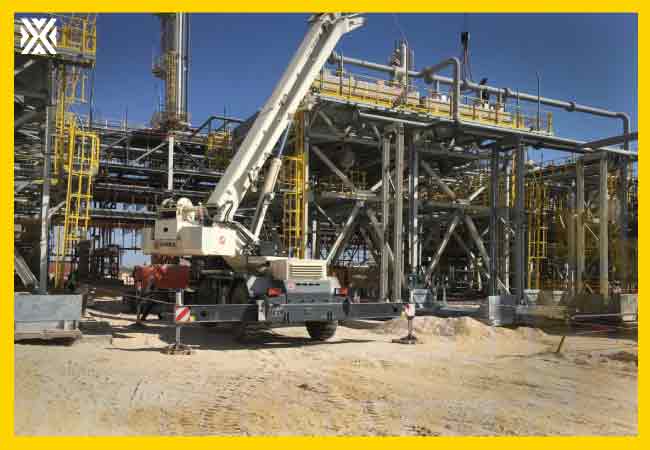Currency
June 01, 2019

Probably the most important aspects of PPE in lifting and hoisting operations are head protection and foot protection. There are highly significant hazards associated with head injury, first and foremost the risk from dropped objects during lifting and hoisting operations. This can be from items falling off the load, not just the load falling in its entirety.
A properly fitting protective helmet is essential when working with lifting and hoisting equipment. Head protection also protects operators from the risk of contact with a moving load. Of course, no person should ever be underneath a slung/ moving load, but the interface with pick up and lay down can bring operators into closer proximity with loads, and this is where the protective equipment can be key – both when it comes to head protection and foot protection.

The selection of protective head gear is important. Protective head gear must comply with an internationally recognised standard; examples would be as follows:
Within the European Union – EN 397
In the United States of America – ANSI/ISEA Z89.1-2014
Protective headwear is manufactured for specific environments such as extreme heat and extreme cold, and for specific tasks, e.g. lateral deformation and electrical insulation. It is therefore very important to review your specific requirements through your detailed risk assessment and discuss the opportunities with the manufacturing/ supplying companies. Specifically, for lifting and hoisting, a helmet with lateral deformation properties is good as there is a significant risk to operators from being ‘swiped’ on the side of the head from a moving or swinging load.
As operators are also required to look up on a regular basis to monitor the load, a helmet with a smaller brim will aid visibility without forcing the operator to keep adjusting the helmet for vision.
Lifting of personnel in a suspended basket or elevated forklift basket should be avoided in preference of dedicated lifting devices such as Mobile Elevated Work Platforms, cherry pickers and scissors lifts. Where personnel lifts associated with lifting appliances are unavoidable, these lifts must be managed through detailed planning and rigorous physical and administrative controls, including: regular inspection requirements, risk assessment and written authorisation by the person in control of the location.
This type of lifting operation is usually associated with ‘basket transfer’, which can be from vessel to vessel, vessel to rig/ platform, and vice versa. Basket transfer is performed with some form of proprietary basket, e.g. Billy Pugh. Historically, basket transfer has been shunned as it is considered high hazard; however, a recent increase in the number of helicopter crashes and significant improvement in both lifting devices and equipment have seen some operators move back to basket transfer as an acceptable option.
The key safety components of personnel transfer are:
Operations are performed according to a specific personnel lift plan
Lifted personnel are adequately secured in the device
Cranes are fitted with additional protective devices to protect against catastrophic failure and free fall, and routine/planned personnel transfer by lifting should not be performed in hours of darkness.
A properly fitting protective helmet is essential when working with lifting and hoisting equipment. Head protection also protects operators from the risk of contact with a moving load. Of course, no person should ever be underneath a slung/ moving load, but the interface with pick up and lay down can bring operators into closer proximity with loads, and this is where the protective equipment can be key – both when it comes to head protection and foot protection.

“for lifting and hoisting a helmet with lateral deformation properties is good as there is a significant risk to operators from a moving or swinging load”
The selection of protective head gear is important. Protective head gear must comply with an internationally recognised standard; examples would be as follows:
Protective headwear is manufactured for specific environments such as extreme heat and extreme cold, and for specific tasks, e.g. lateral deformation and electrical insulation. It is therefore very important to review your specific requirements through your detailed risk assessment and discuss the opportunities with the manufacturing/ supplying companies. Specifically, for lifting and hoisting, a helmet with lateral deformation properties is good as there is a significant risk to operators from being ‘swiped’ on the side of the head from a moving or swinging load.
As operators are also required to look up on a regular basis to monitor the load, a helmet with a smaller brim will aid visibility without forcing the operator to keep adjusting the helmet for vision.
You raise me up
Lifting of personnel in a suspended basket or elevated forklift basket should be avoided in preference of dedicated lifting devices such as Mobile Elevated Work Platforms, cherry pickers and scissors lifts. Where personnel lifts associated with lifting appliances are unavoidable, these lifts must be managed through detailed planning and rigorous physical and administrative controls, including: regular inspection requirements, risk assessment and written authorisation by the person in control of the location.
Personnel transfer by lifting
This type of lifting operation is usually associated with ‘basket transfer’, which can be from vessel to vessel, vessel to rig/ platform, and vice versa. Basket transfer is performed with some form of proprietary basket, e.g. Billy Pugh. Historically, basket transfer has been shunned as it is considered high hazard; however, a recent increase in the number of helicopter crashes and significant improvement in both lifting devices and equipment have seen some operators move back to basket transfer as an acceptable option.
The key safety components of personnel transfer are:
Cranes are fitted with additional protective devices to protect against catastrophic failure and free fall, and routine/planned personnel transfer by lifting should not be performed in hours of darkness.









